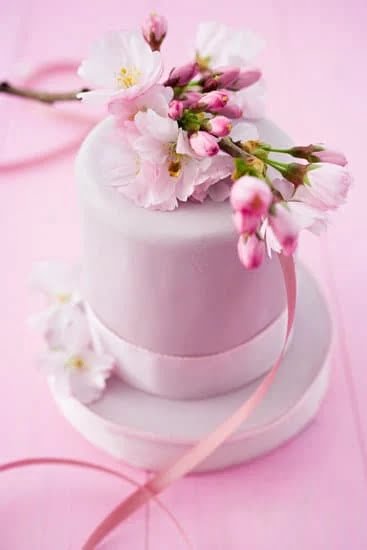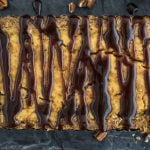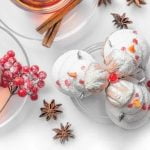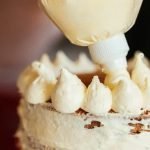Decorating a cake without frosting tips can be a creative and unique way to showcase your baking skills. While traditional cake decorating often involves using buttercream or fondant, there are many alternative methods that can produce stunning results. In this article, we will explore the reasons why you might choose to decorate a cake without frosting tips and delve into various non-traditional techniques that can elevate your cakes to a whole new level.
For some, the decision to forego frosting tips may stem from personal taste preferences or dietary restrictions. Others may simply want to experiment with different textures and flavors. Regardless of the reason, there are countless ways to decorate a cake without relying on the tried-and-true methods of frosting piping and smoothing.
By embracing natural ingredients such as fresh fruits and flowers, you can create visually stunning cakes that are also deliciously flavorful. Mastering the art of whipped cream opens up endless possibilities for intricate designs and delicate decorations.
Furthermore, exploring techniques for fondant-free cake decorating allows you to achieve smooth finishes and intricate details without the need for specialized tools or ingredients. In this article, we will delve into these methods and more, guiding you through each step of the process to help you unlock your creativity in cake decoration.
Alternative Cake Decorations
When it comes to decorating a cake, frosting tips are often the go-to method. However, there are plenty of other non-traditional methods that can be used to create stunning and unique cake decorations. These alternative cake decoration techniques not only add visual appeal but also allow for more creativity and experimentation in your baking endeavors.
One of the most popular non-traditional methods for cake decoration is embracing natural ingredients such as fresh fruits and flowers. By using these elements, you can transform a simple cake into a work of art. Fresh fruits can be arranged on top of the cake or used to create intricate designs.
Flowers, either edible or non-edible, can be used to add a touch of elegance and beauty to any cake. Creating a fruit or floral arrangement doesn’t require any special tools, making it an accessible option for anyone looking to decorate their cakes in a unique way.
Another non-traditional method that can elevate your cake decorations is mastering the art of whipped cream. With its light and airy texture, whipped cream offers endless possibilities for decorating cakes. From simple swirls and rosettes to more elaborate designs like ruffles and shells, whipped cream can be used to create stunning desserts with minimal effort. Additionally, whipped cream can be flavored and tinted in various colors, allowing for even more customization options.
In addition to exploring natural ingredients and whipped cream, fondant-freecake decorating is another non-traditional method worth considering. Fondant-free methods rely on alternative techniques using buttercream or ganache frosting instead of fondant to achieve smooth finishes on cakes. This technique gives cakes a more rustic look while still providing ample room for creative expression through piping techniques or other decorative elements.
Using these alternative methods opens up a whole new world of possibilities when it comes to cake decoration. Whether you choose to explore natural ingredients like fruits and flowers, master the art of whipped cream, or experiment with fondant-free techniques, these non-traditional methods allow you to showcase your creativity and elevate your cake decorating skills to new heights.
So next time you’re in the kitchen ready to decorate a cake, think outside the box and try one of these unique and exciting approaches to take your cakes from ordinary to extraordinary.
Embracing Natural Ingredients
Fresh fruits and flowers can be a beautiful and refreshing way to decorate a cake without using traditional frosting. These natural ingredients not only add visual appeal but also bring a burst of color, flavor, and texture to your creation. Whether you want a light and summery vibe or an elegant and sophisticated look, incorporating fresh fruits and flowers into your cake design can elevate it to a whole new level.
Choosing the Right Fruits
When selecting fruits for decorating your cake, it’s important to choose ones that are not too juicy or prone to wilting. Some popular options include berries like strawberries, blueberries, or raspberries, as well as slices of kiwi, pineapple rings, or peach halves. These fruits not only have vibrant colors but also add a refreshing taste that complements the sweetness of the cake.
Using Flowers as Edible Decorations
Edible flowers can be an exquisite addition to any cake design. However, it’s crucial to use flowers that are safe for consumption and free from any chemicals or pesticides. Some edible flower options include violets, pansies, nasturtiums, marigolds, and roses (make sure they haven’t been sprayed with any chemicals). Before using them on your cake, gently wash the flowers and pat them dry with a towel.
Creative Arrangement and Presentation
To create an eye-catching display with fresh fruits and flowers on your cake, it’s essential to consider both arrangement and presentation. You can arrange fruits in concentric circles on top of the cake or place them strategically around the edges. For a more informal look, scatter smaller fruits like berries randomly across the surface of the frosted cake.
When using flowers as decorations, you can cluster them together in one area or weave them through the layers of the cake for an ethereal effect. Additionally, you can dust some powdered sugar on top of the cake to give it a finishing touch and create a visually pleasing contrast with the vibrant colors of the fruits and flowers.
Overall, embracing natural ingredients like fresh fruits and flowers can provide a unique and stunning alternative to traditional frosting when decorating a cake. The result is not only visually appealing but also deliciously fruity or subtly floral, making your cake a true centerpiece that will impress your guests.
Mastering the Art of Whipped Cream
Whipped cream is a versatile and delicious alternative to frosting when it comes to decorating cakes. Not only does it add a light and creamy texture, but it also allows for unique designs and flavors. In this section, we will explore different techniques and ideas for mastering the art of whipped cream cake decorations.
To start, it’s important to properly whip the cream to achieve the desired consistency. Using chilled heavy cream with a high fat content (around 35%) will result in a more stable whipped cream. Before whipping, chill your mixing bowl and beaters in the freezer for about 15 minutes. This will help the cream whip up faster and stay fluffy longer.
There are several ways to enhance the flavor of whipped cream. Adding sugar or sweeteners can give it a touch of sweetness, while extracts like vanilla or almond can add depth and complexity. For more adventurous flavors, consider incorporating ingredients like cocoa powder, espresso powder, or even liqueurs.
One popular technique for decorating with whipped cream is piping. You can use various piping tips to create different shapes and designs on your cake. Start with a simple star tip for rosettes or swirls and gradually experiment with different tips to create borders, ruffles, or flowers. To make your decorations more vibrant and attractive, you can also add food coloring to the whipped cream.
When working with whipped cream decorations, keep in mind that they need to be refrigerated until serving time as they may melt easily at room temperature. Also, avoid placing heavy or moist toppings on top of the whipped cream as they may cause it to deflate or lose its shape.
Overall, mastering the art of whipped cream opens up endless possibilities for decorating cakes without traditional frosting tips. With these techniques and ideas in mind, you can enhance both the taste and aesthetics of your homemade creations.
| Techniques | Ideas |
|---|---|
| Properly whip chilled heavy cream with high fat content | Add sugar, extracts, cocoa powder, espresso powder, or liqueurs to enhance flavor |
| Experiment with different piping tips for unique shapes and designs | Create rosettes, swirls, borders, ruffles, or flowers |
| Add food coloring to whipped cream for vibrant decorations | Refrigerate decorations until serving to prevent melting |
Perfecting the Art of Fondant-Free Cake Decorating
Fondant is a popular choice for cake decorating due to its smooth and flawless finish. However, it can be quite challenging to work with and not everyone enjoys its taste. If you’re looking for alternative ways to decorate your cake without using fondant, there are plenty of options available that will still result in a beautiful and delicious creation.
One option is to use buttercream frosting as an alternative to fondant. Buttercream frosting can be easily manipulated into different patterns and textures using various piping techniques. You can create rosettes, ruffles, or even add dimension by adding layers of color with different shades of buttercream. Additionally, you can achieve a smooth finish by using a scraper or spatula to create clean edges.
Another way to decorate a cake without fondant is by using fresh fruits and flowers. Not only does this add natural beauty, but it also adds a pop of color and freshness to your creation. Arrange slices of berries, kiwis, or citrus fruits on top of the cake or use whole fruits like strawberries or cherries as garnishes. Flowers such as roses, pansies, or lavender can add an elegant touch when placed strategically on the cake.
If you want to take your non-fondant cake decoration skills up a notch, consider using chocolate ganache or caramel glaze as alternatives. These options not only provide a glossy finish but also complement the flavors of the cake itself. Pour the ganache over the top of the cake and let it cascade down the sides for a sleek look. Drizzle caramel glaze in patterns across the surface for added visual interest.
Creating Edible Art
Using Chocolate as a Decorative Element
When it comes to creating edible art on a cake without frosting, chocolate is a versatile and delicious option. Whether you choose to melt and drizzle it over the cake or create intricate designs with chocolate molds, this ingredient can elevate your cake decorations to new heights.
One popular technique is to create chocolate shards or curls. To make chocolate shards, simply melt your desired type of chocolate and spread it thinly onto a baking sheet lined with parchment paper. Once the melted chocolate has cooled slightly but is still pliable, use a spatula or knife to carefully scrape and lift up sections of the chocolate, creating irregular shapes.
These can then be placed on top of the cake for an elegant and textured effect. For chocolate curls, simply use a vegetable peeler to shave thin strips off a block of chocolate.
Nutty Additions for Texture and Flavor
Incorporating nuts into your cake decorations not only adds texture but also enhances the flavor profile of your dessert. Chopped nuts can be sprinkled on top of the cake or pressed onto the sides for some extra crunch. If you want to take it a step further, consider using whole nuts such as almonds or walnuts as decorative elements. Arrange them in patterns or clusters on top of the cake to create an eye-catching design.
Another creative way to utilize nuts is by making nut buttercream or ganache fillings. Blend roasted nuts until they form a smooth paste and then incorporate them into your frosting mixture for added depth of flavor. You can also use ground nuts as one of the ingredients in your cake batter itself, providing a nutty essence throughout each slice.
Exploring Other Toppings
While chocolate and nuts are popular choices when it comes to decorating cakes without traditional frosting tips, there are plenty of other toppings that can add flair to your creations. Fresh fruit such as berries, sliced peaches, or kiwi can be artfully arranged on top of the cake to provide bright pops of color and a refreshing element. Edible flowers, such as violets or pansies, not only add elegance but also a delicate floral note to your dessert.
For an extra touch of indulgence, consider incorporating caramel or butterscotch sauce into your cake decorations. Drizzle it over the top of the cake or pour it into decorative molds and let it cool before placing it on the cake. The rich and sweet flavor of these sauces will complement your cake while creating a visually appealing effect.
By exploring these edible art techniques utilizing chocolate, nuts, and other toppings, you can transform your cake decorating skills without relying on traditional frosting tips. Experiment with different flavors and textures to create stunning creations that are both visually appealing and delectable.
Taking a Dip
When it comes to decorating a cake without frosting tips, one alternative that can add both visual appeal and flavor is using glazes and ganaches. These glossy and smooth toppings can create a stunning finish while adding a touch of elegance to any cake. In this section, we will explore different types of glazes and ganaches that you can use to take your cake decorating skills to the next level.
Chocolate Glaze
One of the most popular choices for glazing cakes is a classic chocolate glaze. Made from melted chocolate and cream, this glaze creates a rich, shiny coating that can make any cake look absolutely decadent. To achieve the perfect consistency, heat the cream until hot but not boiling, then pour it over chopped chocolate and stir until smooth. Allow the glaze to cool slightly before pouring it over the cake, ensuring an even coating.
Mirror Glaze
For a show-stopping effect, consider using a mirror glaze on your cake. Known for its high shine finish and vibrant colors, mirror glazes are made from gelatin, sugar syrup, condensed milk, and white chocolate or food coloring for different hues. The key to achieving that flawless mirrored surface is pouring the glaze over a chilled cake so that it sets quickly and smoothly.
Fruit Glaze
If you’re looking for a lighter option with a burst of fruity freshness, fruit glazes are an excellent choice. These can be made by reducing fruit juice with sugar until it thickens into a syrup-like consistency.
You can choose from various fruits like strawberries, raspberries or citrus fruits to match the flavors in your cake. Once cooled slightly but still liquid enough to pour easily, drizzle or brush the fruit glaze over the cake for delightful taste and a beautiful gloss.
Incorporating different types of glazes and ganaches into your cake decorating repertoire can open up a world of creativity and possibilities. Whether you opt for a timeless chocolate glaze, a mesmerizing mirror glaze, or a refreshing fruit glaze, these alternatives to frosting tips will not only enhance the appearance of your cake but also tantalize the taste buds of anyone who takes a bite.
So don’t shy away from experimenting with these alluring toppings – your cakes will never be the same again.
Non-Edible Decorations
When it comes to cake decorating, there are countless ways to get creative without relying on frosting alone. One fun and charming way to elevate your cake design is by incorporating non-edible decorations. From ribbons and toys to other creative elements, these additions can add a personal touch and make your cake truly unique.
Ribbons are a versatile and simple decoration that can instantly transform the look of a cake. Whether you choose a satin ribbon for an elegant touch or a colorful patterned ribbon for a playful vibe, this simple addition can create a beautiful border around the cake or tie together different layers. Additionally, you can achieve stunning effects by using ribbons to create bows, rosettes, or even weaving them into intricate patterns.
Toys also serve as fantastic decorations for cakes, especially for themed parties or celebrations. Whether it’s action figures for a superhero-themed cake or miniature dolls for a princess-inspired creation, adding toys not only enhances the overall appearance but also adds an element of fun to the cake. Just make sure that any toys used are clean and safe before placing them on the cake.
Aside from ribbons and toys, there are numerous other creative elements that can be incorporated into your cake designs. Consider using edible flowers or fresh fruits as toppings to add color and freshness to your creations. Edible gold leaf or silver leaf can provide an elegant touch. You could even experiment with edible glitter for some extra sparkle.
In summary, incorporating non-edible decorations into your cake designs allows you to unleash your creativity in unique ways. Whether it’s through ribbons, toys, or other creative elements such as flowers or edible glitter, these additions can take your cakes to new heights and wow your guests with visually stunning creations.
| Decoration | Description |
|---|---|
| Ribbons | Versatile and simple, can be used as borders, bows, or woven into patterns |
| Toys | Adds a fun and thematic touch to cakes, suitable for themed parties |
| Edible flowers and fruits | Adds color, freshness, and natural elements to cake designs |
| Edible glitter or gold leaf | Provides an elegant and sparkly touch for special occasions |
Exploring the World of Stencils and Powders
In the world of cake decorating, there are endless options for creating beautiful and unique designs. One technique that can really take your cake to the next level is using stencils and powders to create stunning patterns. This section will explore how you can incorporate stencils and powders into your cake decorating repertoire, showcasing your creativity and adding a touch of elegance to your cakes.
Stencils are a versatile tool that can be used to create intricate designs on cakes. They come in a variety of shapes and sizes, allowing you to choose the pattern that fits your vision. To use a stencil, simply place it on top of your frosted or fondant-covered cake and secure it in place with tape or pins.
Then, using an airbrush or food coloring spray, lightly spray the design onto the cake. Carefully remove the stencil to reveal a beautifully patterned cake.
Powders, on the other hand, can be used to add dimension and depth to your cake decorations. Edible powders come in a wide range of colors and finishes, such as metallic or pearlized. To use powders, first determine which areas of your cake you want to highlight.
Then, using a small brush or powder puff, dust the powder onto those areas. The powder will adhere to the frosting or fondant, creating a stunning effect that catches the light and adds visual interest.
By incorporating stencils and powders into your cake decorating techniques, you can truly elevate your creations. Whether you’re looking for delicate lace patterns or bold geometric designs, stencils offer endless possibilities for customization. Similarly, powders allow you to add texture and shimmer to any part of your cake. With some practice and experimentation, you’ll soon be creating cakes that are not only delicious but also works of art.
| Type of Powder | Color/Finish |
|---|---|
| Pearl Dust | Pearlescent shimmer |
| Luster Dust | Metallic finish |
| Sparkle Dust | Glimmering effect |
Showcasing Your Creativity
In this section, we will delve into the exciting world of 3D cake decorations and provide you with some tips to showcase your creativity. 3D cake decorations can add an element of surprise and delight to any special occasion or celebration. Whether you are a beginner or a seasoned baker, these tips will help you create stunning and unique designs that will surely impress your guests.
- Start with a sturdy base: When making 3D cake decorations, it is important to have a strong and stable base to support your design. Use a dense cake such as pound cake or sponge cake which can withstand the weight of the decorations without collapsing. Additionally, consider using dowel rods or straws inserted into the cake to provide extra support for larger pieces.
- Use different textures: Incorporating different textures in your 3D cake decorations can add depth and visual interest to the design. Experiment with techniques such as texturizing fondant, embossing patterns onto chocolate, or using edible paints to create realistic details. You can also mix in non-edible elements such as fabric, feathers, or jewels for added texture.
- Sculpt with modeling chocolate: Modeling chocolate is a versatile medium that allows you to sculpt intricate shapes and designs for your 3D cake decorations. Unlike fondant, it has a soft and pliable texture that can be easily molded into various forms. Use different colors of modeling chocolate to create vibrant and eye-catching accents on your cakes.
- Add movement: To make your 3D cake decorations truly stand out, consider incorporating movement into your designs. For example, you can create spinning wheels on a car-themed cake by attaching small gears made from fondant or gum paste onto toothpicks and inserting them into the cake. This adds an interactive element that will captivate both children and adults alike.
By following these tips, you can elevate your cake decorating skills to a whole new level and create stunning 3D cake decorations that will amaze your friends and family. Remember to let your creativity shine and have fun experimenting with different techniques and materials. With practice, you will become a master of 3D cake decorating and wow everyone with your artistic creations.
Conclusion
In conclusion, decorating a cake without frosting tips opens up a whole new world of possibilities and creativity. By exploring alternative cake decorations and embracing natural ingredients like fresh fruits and flowers, you can create visually stunning and delicious masterpieces. Additionally, mastering the art of whipped cream and fondant-free cake decorating techniques will further enhance your cake decorating skills.
Furthermore, utilizing chocolate, nuts, and other toppings as edible art can add depth and texture to your creations. Experimenting with different glazes and ganaches can also provide unique flavors and finishes to your cakes. Don’t be afraid to incorporate non-edible decorations such as ribbons, toys, or other creative elements to make your cakes truly stand out.
Moreover, using stencils and powders can help you create intricate patterns that showcase your attention to detail. Finally, don’t forget about the art of making 3D cake decorations. Whether it’s sculpting figures or creating multi-layered designs, letting your creativity shine through will elevate your cake decorating skills to a whole new level.
In summary, by stepping outside the traditional boundaries of frosting-tipped cakes, you can uncover endless possibilities for creating beautiful and unique confections. Whether it’s experimenting with different ingredients or exploring unconventional techniques, the sky is the limit when it comes to elevating cake decorating to a whole new level of artistry.
So grab your spatula, unleash your imagination, and get ready to create cakes that not only taste amazing but also capture the eyes of everyone who sees them.
Frequently Asked Questions
How do you decorate a cake without icing tips?
Decorating a cake without icing tips can still yield beautiful results with a bit of creativity and resourcefulness. One option is to use a spoon or spatula to create texture on the icing. You can gently press the back of the spoon against the icing to create swirls or peaks, giving it a decorative touch. Another alternative is using a ziplock bag as a makeshift piping bag.
Simply fill the bag with icing, squeeze it toward one corner, and then snip off the tip to achieve your desired thickness. This allows you to pipe decorative patterns onto the cake. Additionally, you can dust powdered sugar or cocoa powder over the cake using a fine mesh sieve to add an elegant touch and enhance its visual appeal.
What is the easiest way to decorate a cake?
The easiest way to decorate a cake is often by using pre-made decorations that require minimal effort. Cake decorating kits are widely available and typically include easy-to-use tools like stencils, edible markers, or pre-made fondant shapes that can be placed on top of the cake for instant decoration.
Other simple techniques include sprinkling colored sugar or edible glitter over the frosting, which creates an eye-catching effect without much fuss. Another easy option is adding fresh flowers as they provide an instant burst of color and elegance.
How do you make a plain cake look better?
To make a plain cake look better, there are several simple techniques you can employ with minimal effort. One approach is adding a thin layer of glaze or syrup brushed over the cooled cake’s surface to give it a glossy appearance while enhancing its flavor profile. Alternatively, you can dust some powdered sugar or cocoa powder on top of the cake using a fine sieve for an elegant finishing touch.
Adding fresh fruits like sliced strawberries or berries arranged on top provides both visual appeal and delicious flavor bursts. If you want something more elaborate, consider spreading a thin layer of fruit preserves between each layer of the cake before frosting it – this adds extra moisture and flavor that will elevate even the simplest of cakes.

Welcome to our cake decorating blog! My name is Destiny Flores, and I am the proud owner of a cake decorating business named Cake Karma. Our mission is to provide delicious, beautiful cakes for all occasions. We specialize in creating custom cakes that are tailored specifically to each customer’s individual needs and tastes.





